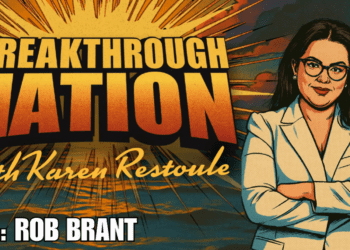This article originally appeared in National Newswatch.
By Ken Coates, January 16, 2024
For Canada’s Indigenous peoples, whose lands are sources for the coveted elements, they must wrestle with difficult choices between economic development and environmental protection — and with whatever social impact this activity brings.
Nunavut has an unparalleled opportunity to get this balance right, on its own terms and not according to outside preferences and dictates. The Inuit-dominated northern territory will soon be granted control of its own resources by the federal government. It is preparing to implement the highest levels of evaluation and review, while expediting the decision-making process.
For the past two decades, governments have been expanding approval processes and improving community consultations, project oversight and remediation efforts. Motivated by a series of favourable Supreme Court rulings, First Nations, Inuit and Metis demanded greater attention to their Indigenous and treaty rights; federal, provincial and territorial governments have responded.
Indigenous communities have gained greater awareness of the complex social, cultural and ecological consequences of the extractive industries. This led to national and international conversations about the importance of understanding the cumulative effects of resource development on vulnerable remote and Indigenous populations.
Resource projects interact with the natural world in significant and often unpredictable ways. On Indigenous and settler societies, the effects range from well-paid jobs to major infrastructure improvements and serious repercussions for local women and girls. The debate over approvals results in delays, conflict and community divisions.
As communities and regional governments contemplate major resource projects, they balance competing interests, anticipated positive outcomes and major concerns. Major initiatives undertaken before Indigenous peoples and regional governments played important roles in the approval process often had devastating social effects, few economic returns and decades-long environmental impacts. Communities have long memories.
Over time, Canada pieced together a regulatory and evaluation regime designed to address the shortcomings of the past and to improve the community outcomes from resource projects. The Supreme Court imposed “duty to consult and accommodate” requirements, strengthening the hands of Indigenous peoples.
Modern treaties in the territorial North recognized Indigenous control of settlement lands and constitutionally entrenched a substantial Indigenous presence in project assessment.
New federal environmental legislation, particularly Bill C-69, expanded the reach of the evaluative process considerably, adding to the time and costs associated with securing project approval. However, that expanded reach is now being reassessed after the Supreme Court found parts of that legislation unconstitutional.
More sympathetic assessments of the impact of government policy on Indigenous communities and an awareness of the multi-generational impacts of development led to further strengthening of the development review processes. The emergence of cumulative effects analysis represents the current gold standard of evaluation and review, combining an appreciation for historical impacts, lessons learned from earlier developments and careful forecasts of likely downstream consequences from development.
The concept of cumulative effects recognizes the complexity and interconnectedness of the impacts of development. This approach has substantial room for the assessment of desirable outcomes, like more employment and higher and more stable incomes, improved local facilities and infrastructure, and an increased ability to keep young people in their communities. Drawing on historical experience, this approach permits both a reasonable assessment of what might happen with a toolbox of measures, policies and investments taken to offset potential negative consequences.
The cumulative effects process recognizes that development can, alternately, meet high environmental standards, cause long-term environmental harm, support Indigenous cultural resilience, and/or undercut social cohesion. This approach requires an evaluation of multiple projects — past, present and proposed — and considers the comprehensive impacts of development activity. Resource extraction, put simply, is neither a panacea for Indigenous communities nor an unmitigated catastrophe. Positive outcomes can, with good planning and co-operation, be maximized. Similarly, negative effects can be minimized.
The challenge for Indigenous communities and regional governments is to integrate cumulative effects thinking and analysis into the planning process, while also ensuring that the complexity and intensity of the evaluation process do not prevent Indigenous-supported development from proceeding. For many people in industry and Indigenous business, current government policies and evaluation procedures are often seen as being inherently anti-development and an intrusion on regional wealth-building.
More positively, cumulative impacts approaches recognize the inherent interconnections between ecological, social, cultural and economic impacts and are, as a result, complex and potentially very costly. The forecasting of these interactions is influenced by multiple external influences, such as market prices and demand for commodities, corporate decisions, regional and national government policies, shifting Indigenous priorities and unpredictable environmental factors. Notwithstanding the complexities of the effects, integrated planning and evaluation is essential if Indigenous communities are to maximize benefits and minimize the harmful costs.
As of 2024, Canada has a unique and valuable opportunity to explore the potential and practicalities of a cumulative effects approach to project evaluation.
Nunavut, the Inuit-dominated northern territory, has made major strides toward self-government, including a modern treaty with the Inuit, exceptional Inuit regional associations, economic development corporations, hunter and trapper organizations, an Inuit-controlled public government and growing Indigenous legal authority over development. As well, the territory has exceptional resource potential and faces intense development pressures.
Nunavut will shortly sign a devolution agreement with the government of Canada, transferring responsibility for the management of land and resources to the territory. The combination of territorial empowerment, regional administrative control and strong Indigenous organizations gives Nunavut control of the instruments of local evaluation, monitoring and long-term assessment. Furthermore, Nunavut’s approach to planning is built around three closely connected pillars: the resilience of Indigenous society, wealth creation and the protection of the natural environment, focusing on the caribou and marine life.
Nunavut, in other words, already approaches resource development from a cumulative effects point of view. The challenge for the territory is to respect Inuit authority, maximize community participation and align evaluation and approval processes with regional priorities. Current approaches separate community interests, economic development plans and environmental needs into separate reviews.
Combining all three reviews, a Nunavut-created cumulative effects process could produce faster and more comprehensive project evaluation, better results for Inuit communities and greater environmental protection. Such an approach would address the top regional priorities of economic development, ecological sustainability and responsiveness to community.
Nunavut is inherently interesting and its continued evolution has attracted a great deal of attention. The development of cumulative effects process raises the importance of Nunavut policy development to a globally significant level.
Ken Coates is a distinguished fellow and director of Indigenous Affairs at the Macdonald-Laurier Institute.






